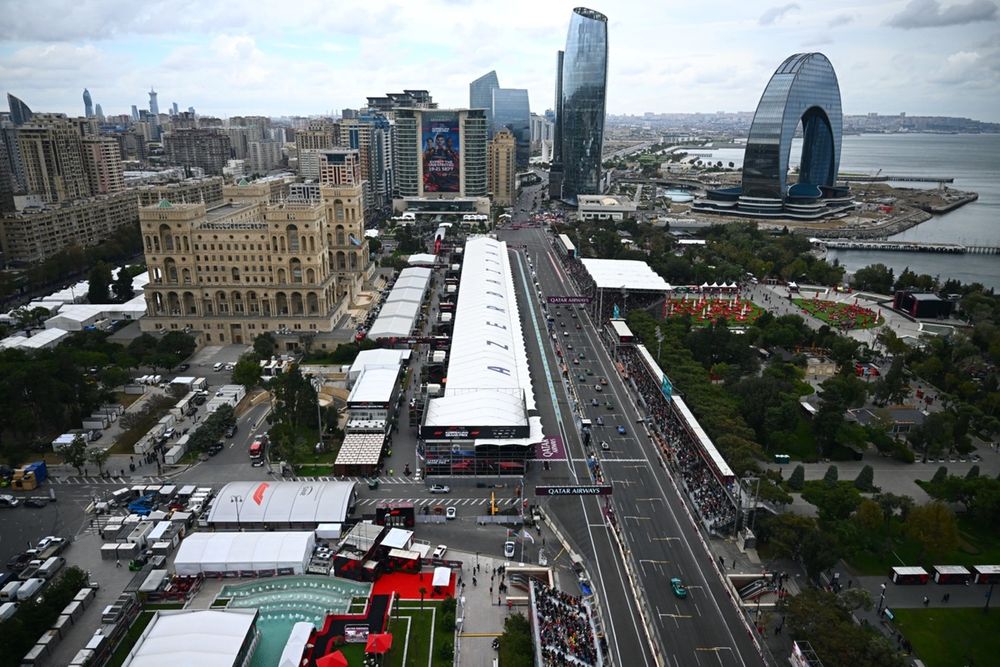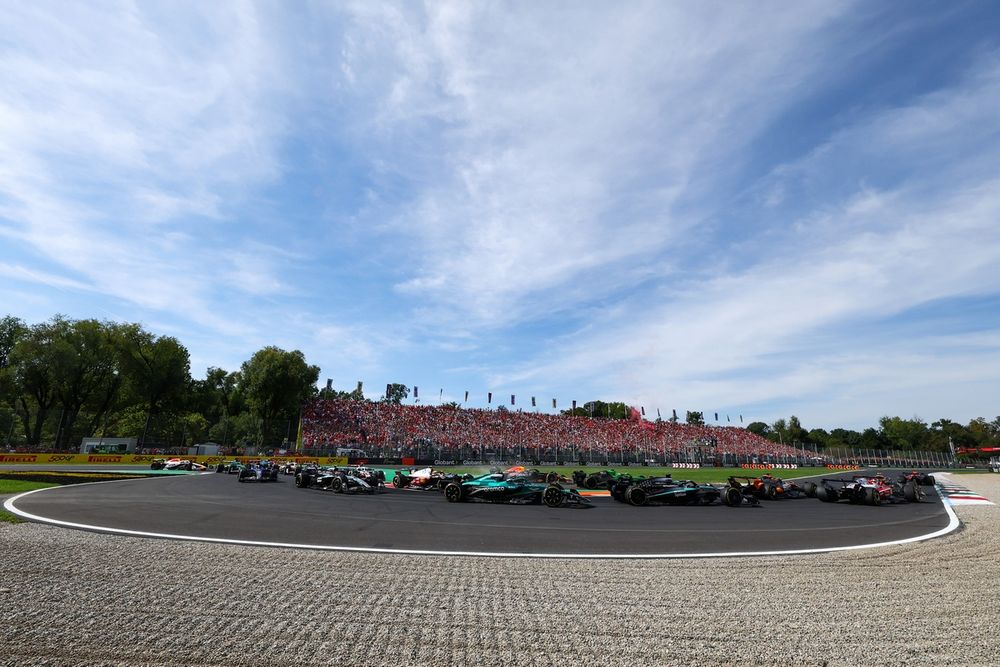Formula 1 has a packed calendar that takes in 24 tracks across 21 countries in five continents, but it takes more than a nice ribbon of tarmac to join the championship.
F1 and the FIA have strict guidelines over what circuits can host a grand prix and they must be classified as Grade 1 to qualify. This is the top level of the FIA’s seven-tiered system that covers everything from drag strips to rally stages.
The FIA grading system sets out the rules and requirements for different venues, each covering various safety aspects or track characteristics. For Grade 1 venues, these are all with the aim of making the track safe for cars with a power to weight ratio of less than 1hp/kg.
The layout requirements of a Grade 1 circuit
The FIA has a set of basic requirements that a track must meet in order to be classified as Grade 1, but importantly some of these only apply to newly constructed venues.
Firstly, the circuit itself must be at least 3.5km and no more than 7km in total. The FIA also mandates that there should be no straights longer than 2km – Baku and its 2.2km straight are a rare exception to this rule.

The Baku straight is more than 2km long
Photo by: Pauline Ballet – Formula 1
The next big requirements relate to the width of different circuits, so that the tarmac is wide enough for cars to easily pass without being run into walls, grass or gravel traps. The FIA mandates that circuits be no less than 12m wide, although temporary street tracks like Monaco get an exception to this rule. In the principality, the track averages around 10m wide across the lap, leading some critics to argue that it isn’t fit for today’s two-metre-wide F1 cars.
The start of the race must also meet several parameters, with the grid required to be at least 15m wide and the start line placed “preferably” 250m from the first corner. Spots on the grid must be spaced 6m apart, although for F1 this rises to 8m, and the first turn should provide a change of direction of at least 45 degrees and have a radius of less than 300m.
There are also rules around the pitlane, which should be at least 12m wide and adjacent to the start-finish straight. Pit entry and exit points can’t interfere with the racing line, so cars don’t collide when rejoining the track.
Other rules cover the gradient of a circuit, which can’t be more than 2% on the start/finish straight, and any banking on track shouldn’t exceed 5.7 degrees – although there are exceptions to this rule for Turns 3 and 14 at Zandvoort.
The safety requirements of a Grade 1 circuit
The regulations around F1 circuits don’t just apply to the layout of a track, as the FIA also has strict requirements when it comes to circuit safety.

Runoff and crash barrier requirements vary across each circuit
Photo by: Zak Mauger / LAT Images via Getty Images
Firstly, there are rules around the barriers and runoff requirements for Grade 1 tracks, which differ from lower grade circuits due to the higher speeds of the cars that race on them. These vary track by track and depend on corner layouts and the types of runoffs used – whether that’s grass, gravel or a long tarmac escape road before a combination of deceleration beds, stopping barriers, and energy-absorbing barriers.
Away from the track itself, the FIA also has strict requirements about the medical facilities on site. From Grade 4 upwards, the medical centre must be a permanent fixture of the track and for high-level events like F1, there needs to be at least two doctors present across the race weekend. There must also be at least two surgeons on site who are able to treat injuries such as burns, spinal injuries and concussions.
In terms of the tech and facilities that must be present in every medical centre, the FIA requires equipment like ventilators, heart-rate monitors, oxygen supplies, x-rays, ultrasound equipment, and more.
What other rules must Grade 1 tracks meet?
The FIA has a whole host of other stipulations around the type of circuits that can host F1 races. There are rules around the drainage on the straights so that venues don’t get waterlogged, which includes cutting groves into the tarmac to aid waterflow and having a slope of up to 1.7 degrees.
There is also a complex formula to calculate the number of cars that can run on a Grade 1 track, but F1 has its own rules for the number of runners.

Advertising boards must be secure
Photo by: Sam Bagnall / Motorsport Images
Then, there are rules around advertising equipment at races, with the FIA mandating that advertising boards around the outside of the circuit must be stable and secure, and they shouldn’t interfere with drivers or officials’ visibility. Track surfaces are not allowed to carry adverts, and any ads on run-off areas mustn’t reduce the skid resistance that slows cars down in the event of a collision.
Finally, when it comes to the fan experience, the FIA doesn’t have a set of rules around capacity or infrastructure, but it does require that public areas are accessible to fans with disabilities. As a minimum, the FIA suggests installing a designated viewing area for disabled spectators, specialist toilet facilities, reserved parking places and paved pathways that allow people in wheelchairs to get around.
Every FIA Grade 1 circuit around the world
| Grade 1 Circuits on the 2025 F1 Calendar | Grade 1 Circuits not on 2025 F1 Calendar |
| Albert Park, Australia | Algarve International Circuit, Portugal |
| Shanghai International Circuit, China | Bahrain Oasis Circuit, Bahrain |
| Suzuka, Japan | Bahrain Outer Circuit, Bahrain |
| Bahrain International Circuit, Bahrain | Bahrain Paddock Circuit, Bahrain |
| Jeddah Corniche Circuit, Saudi Arabia | Bahrain “Endurance”, Bahrain |
| Miami International Autodrome, USA | Circuit Paul Ricard, France |
| Imola, Italy | Dubai Grand Prix Circuit, UAE |
| Circuit de Monaco, Monaco | Dubai International Circuit, UAE |
| Circuit de Barcelona-Catalunya, Spain | Estoril, Portugal |
| Circuit Gilles Villeneuve, Canada | Fuji Speedway, Japan |
| Red Bull Ring, Austria | Hockenheimring, Germany |
| Silverstone, UK | Igora Drive, Russia |
| Spa-Francorchamps, Belgium | Indianapolis Grand Prix, USA |
| Hungaroring, Hungary | Istanbul Park, Turkey |
| Circuit Zandvoort, Netherlands | Jerez, Spain |
| Autodromo Nazionale Monza, Italy | Korea International Circuit, South Korea |
| Baku City Circuit, Azerbaijan | Kuwait Motor Town, Kuwait |
| Marina Bay Street Circuit, Singapore | Magny-Cours, France |
| Circuit of the Americas, USA | Moscow Raceway, Russia |
| Autodromo Hermanos Rodriguez, Mexico | Motorland Alcaniz, Spain |
| Autodromo Jose Carlos Pace, Brazil | Motorland Aragon Alcaniz – Aerotest, Spain |
| Las Vegas Strip Street Circuit, USA | Motorland Aragon Alcaniz – FIM, Spain |
| Losail International Circuit, Qatar | Motorland Aragon Alcaniz – Long, Spain |
| Yas Marina Circuit, Abu Dhabi | Mugello, Italy |
| Buddh International Circuit, India | |
| Nurburgring Grand Prix, Germany |
We want your opinion!
What would you like to see on Motorsport.com?
– The Motorsport.com Team
Disclaimer : This story is auto aggregated by a computer programme and has not been created or edited by DOWNTHENEWS. Publisher: motorsport.com





